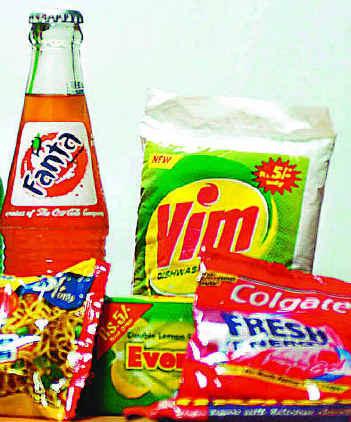In an attempt to push up their profit margins and to cash in on higher disposable incomes and retail opportunities on offer thanks to modern trade, almost all big launches by major multinational FMCGs, like Hindustan Unilever, Nestle, Reckitt Benckiser, Procter & Gamble and GlaxoSmithKline Healthcare, over the past 10-12 months have been aimed at the urban, affluent consumer. Though none of these companies can afford to ignore the mass segment, the focus on high-margin products has never been as significant as it is now.
HUL has rolled out speciality teas under its Taj brand, a super-premium Pond’s skin-care range, the Dove hair-care range and cooking aids under the Knorr Annapurna label. It is working on upgrades of products across categories it is already present in.
In Nestle’s case, there’s Nesvita probiotic dahi, KitKat chunky and Maggi cup noodles — all upgraded, higher-priced sub-brands within the existing categories. Or take Reckitt Benckiser. Its Air Wick air fresheners, specialised cleaning agents such as Harpic and Lizol, hair removal cream Veet and specialist stain remover Vanish — all are high-margin products aimed at affluent urban consumers. As Reckitt Benckiser MD CM Sethi said: “The majority of the new products to be rolled out from Reckitt’s portfolio will now address modern urban households.” He added that while Reckitt does have high-performing mass brands such as Dettol soaps and Mortein coils which bring in healthy market shares from rural and urban markets, there exists huge opportunities to be tapped in urban households.
“Healthy growth rates of Lizol and Harpic, which are converting consumers from using acid and phenyl, are indication that the market for specialised products exists and that it needed to be tapped,” Mr Sethi said.
P&G, though always a premium player, has notched up its presence even higher on the price spectrum with recent launches such as Oil of Olay.
Said a Mumbai-based FMCG analyst: “Companies are preparing themselves to address the needs of this upmarket consumer. Besides, having a premium product has a positive rub off on the mass bread-and-butter brand. The premium Pond’s Age Miracle is bound to have a positive rub off on the mass Pond’s cold cream in terms of brand perception.”
Stating that the company has not “moved away” from mass products, a Nestle spokesperson said: “We try to convert our consumer insights into products that add value to consumers at various points.” The spokesperson said that while Maggi noodles are available from price points upwards of Rs 5, Maggi Cuppa Mania has been developed to widen the brand’s net. The food company has launched KitKat Chunky and the mass KitKat Mini.
Says GlaxoSmithKline Consumer Healthcare (GSKCH) MD Zubair Ahmed, the company is following a strategy of segmentation and identifying gaps in the health and nutrition space rather than consciously tapping the premium end of the price spectrum. “Horlicks for women and Actibase are meant for a certain consumer profile,” he said.
Subscribe to:
Post Comments (Atom)





1 comment:
Very informative and great post!!!
Distributor Locations
Distributors Profile
Distributor Lists
Geo-locations
Post a Comment